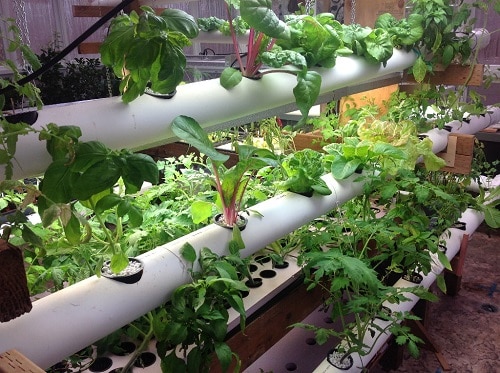If you’re looking to grow your own cannabis plants but don’t have access to outdoor space or don’t want to deal with soil, hydroponic growing could be the perfect solution for you. Hydroponic weed is becoming increasingly popular due to its many benefits, including faster growth rates, higher yields, and greater control over the growing environment. In this beginner’s guide, we’ll cover everything you need to know to get started with hydroponic weed growing.
What is Hydroponic Growing?
Hydroponic growing is a method of growing plants without soil, using nutrient-rich water instead. The plants are grown in a controlled environment, such as a greenhouse or indoor grow room, and are fed with a precise mixture of nutrients that are dissolved in the water. Hydroponic growing allows for faster growth rates, higher yields, and greater control over the growing environment than traditional soil-based growing methods.
Benefits of Hydroponic Growing
There are several benefits to hydroponic growing that make it an attractive option for many cannabis growers:
Faster Growth Rates
Hydroponic plants typically grow faster than soil-based plants because the nutrients are delivered directly to the roots, allowing the plants to focus their energy on growing rather than searching for nutrients in the soil.
Higher Yields
Hydroponic plants also tend to produce higher yields than soil-based plants, due to the precise control over nutrient delivery and environmental conditions.
Greater Control over Growing Environment
Hydroponic growing allows for greater control over the growing environment, including temperature, humidity, and light levels. This can lead to healthier plants and higher yields.
No Soil Required
Hydroponic growing does not require soil, which means there is no need to worry about soil-borne pests and diseases, or the quality of the soil.
Getting Started with Hydroponic Growing
If you’re interested in trying hydroponic growing for yourself, here are the basic steps you’ll need to follow:
Choose a Hydroponic System
There are several different types of hydroponic systems to choose from, including Deep Water Culture (DWC), Drip Irrigation, Ebb and Flow, and Aeroponics. Each system has its own advantages and disadvantages, so it’s important to research each one before deciding which system is best for you.
Choose a Cannabis Strain
Once you’ve chosen a hydroponic system, you’ll need to choose a cannabis strain that is well-suited to hydroponic growing. Look for strains that are known for their high yields, fast growth rates, and resistance to pests and diseases.
Set up Your Growing Space
You’ll need a dedicated growing space for your hydroponic setup, such as a grow tent or spare room. Make sure your space has adequate ventilation, temperature control, and light sources.
Mix Your Nutrient Solution
Hydroponic plants require a precise mixture of nutrients to thrive. You can purchase pre-made nutrient solutions or mix your own using a combination of fertilizer salts.
Plant Your Seeds
Once you’ve set up your hydroponic system and mixed your nutrient solution, it’s time to plant your seeds. Make sure to follow the instructions for your particular hydroponic system to ensure your plants get off to a good start.
Monitor and Adjust
Once your plants are growing, you’ll need to monitor and adjust your nutrient solution and environmental conditions to ensure your plants stay healthy and productive.
Common Hydroponic Growing Issues
Like any growing method, hydroponic growing comes with its own set of challenges. Here are some common issues you may encounter:
Nutrient Imbalances
Hydroponic plants are sensitive to nutrient imbalances, which can lead to stunted growth, discoloration, and other issues. It’s important to monitor your nutrient solution regularly and adjust it as needed to ensure your plants are getting the right balance of nutrients.
pH Imbalances
pH imbalances can also cause problems in hydroponic growing, as the wrong pH can make it difficult for plants to absorb nutrients. Make sure to monitor your pH levels regularly and adjust them as needed.
Pest and Disease Control
While hydroponic growing reduces the risk of soil-borne pests and diseases, it’s still important to monitor your plants for signs of infestation or disease. Use preventative measures such as companion planting and proper sanitation to keep pests and diseases at bay.
Temperature and Humidity Control
Hydroponic plants are sensitive to temperature and humidity fluctuations, so it’s important to keep your growing environment well-regulated. Use fans and ventilation to keep air circulating, and consider using a dehumidifier if humidity levels are too high.
FAQs
Do I need any special equipment to start hydroponic growing?
Yes, you’ll need a hydroponic system, growing medium, nutrient solution, and proper lighting and ventilation.
Can I use any cannabis strain for hydroponic growing?
While most cannabis strains can be grown hydroponically, some strains are better suited to the method than others. Look for strains that are known for their fast growth rates and high yields.
How often should I check and adjust my nutrient solution and pH levels?
It’s recommended to check your nutrient solution and pH levels at least once a week, and adjust them as needed based on your plants’ growth and health.
How do I prevent pests and diseases in hydroponic growing?
Use preventative measures such as companion planting, proper sanitation, and careful monitoring of your plants to prevent pests and diseases from taking hold.
Can hydroponic growing be done on a small scale?
Yes, hydroponic growing can be done on a small scale, such as in a home grow tent or spare room.
Conclusion
Hydroponic growing is a great option for cannabis growers who want faster growth rates, higher yields, and greater control over their growing environment. By choosing the right hydroponic system, cannabis strain, and nutrient solution, and monitoring your plants carefully, you can enjoy a successful and rewarding hydroponic growing experience.


![How to Make a Hydroponics Garden? [The Only Guide You’ll Need] How to Make a Hydroponics Garden](https://hashtaggarden.com/wp-content/uploads/2020/02/How-to-Make-a-Hydroponics-Garden.jpg)